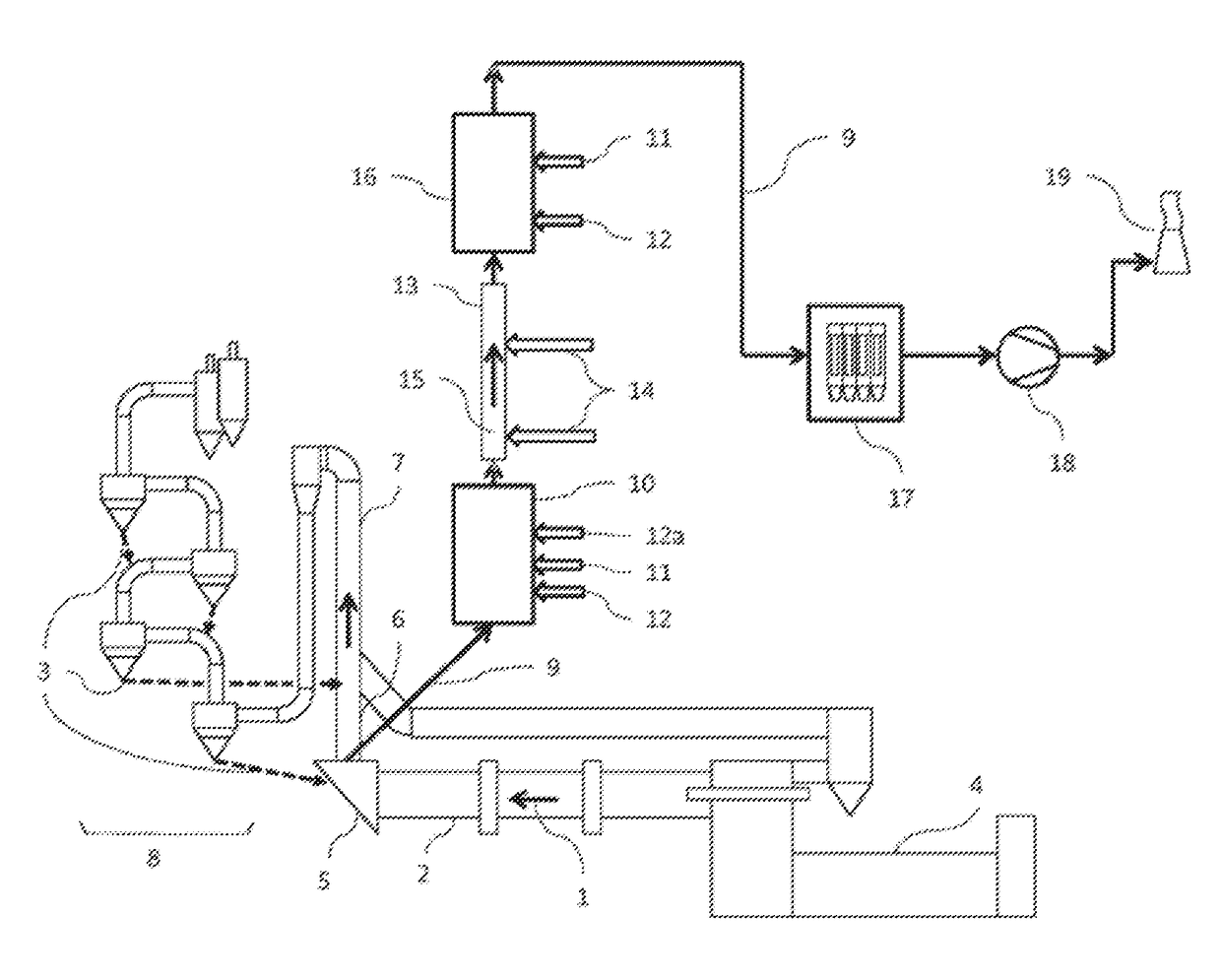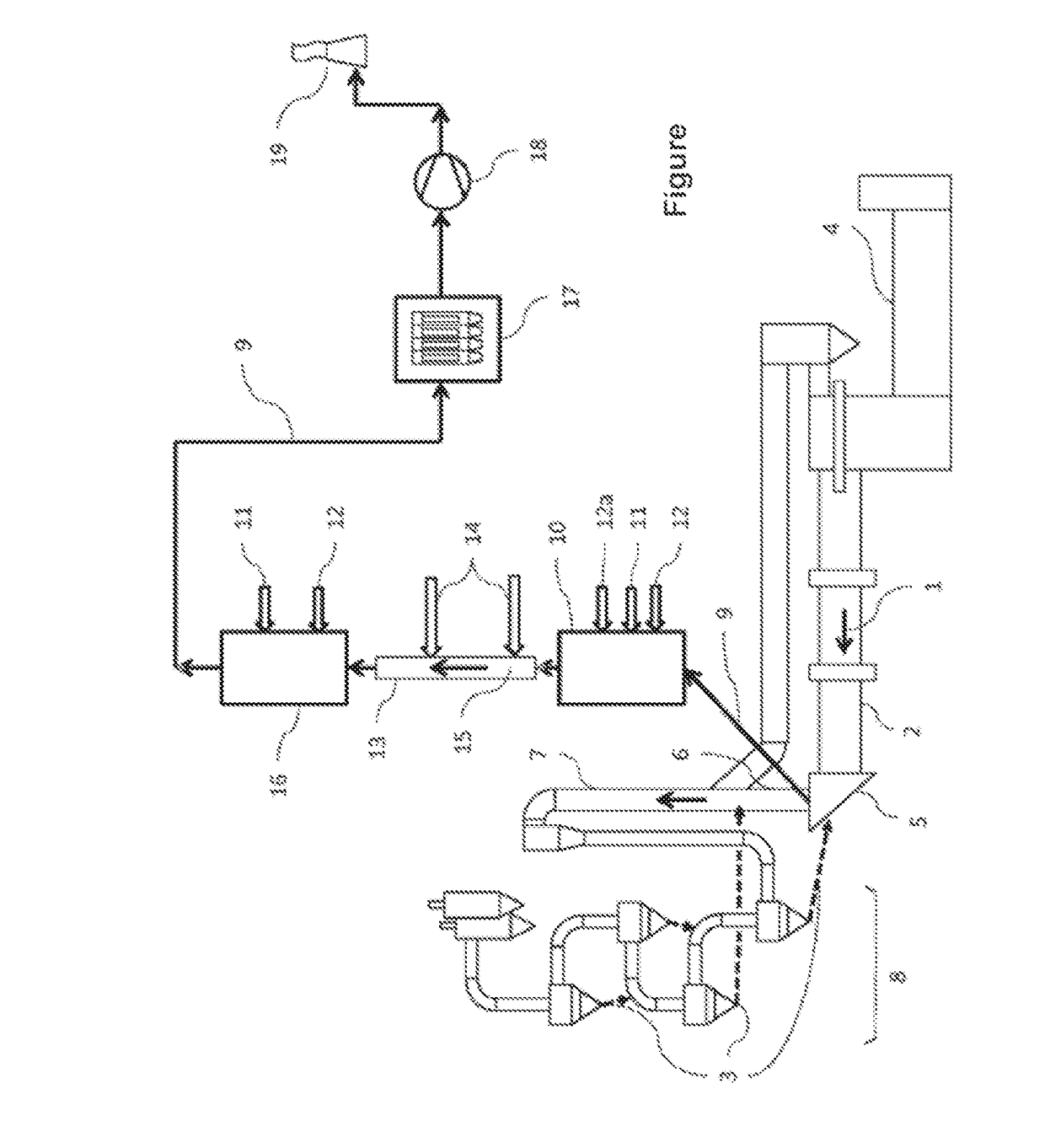Method and plant for denitrifying bypass gases in a multi-stage system of mixing chambers in a plant for producing cement clinker
- Summary
- Abstract
- Description
- Claims
- Application Information
AI Technical Summary
Benefits of technology
Problems solved by technology
Method used
Image
Examples
Embodiment Construction
[0021]In the FIGURE it is evident schematically that flue gas 1 flows into the rotary kiln inlet chamber 5 from a rotary kiln 2, in which raw meal 3 is sintered to form cement clinker which is then cooled in a clinker cooler 4. Following this in the direction of gas flow, in the working example depicted, are a kiln riser duct 6 and a calciner 7 for the deacidification of the raw meal 3. A fraction of the flue gas 1 (kiln exhaust gas) flows through kiln riser duct 6 and calciner 7 into the heat exchanger 8 (presently a multistage cyclone heat exchanger), which serves for the preheating of the raw meal 3 for cement production.
[0022]In accordance with the invention, a part of the flue gas stream 1 emerging from the rotary kiln 2 is drawn off as bypass exhaust gas 9 in the region of the rotary kiln inlet chamber 5, i.e., from the rotary kiln inlet chamber 5 or from the kiln riser duct 6. The bypass exhaust gas 9, which initially on emergence from the rotary kiln 2 has temperatures typic...
PUM
| Property | Measurement | Unit |
|---|---|---|
| Temperature | aaaaa | aaaaa |
| Temperature | aaaaa | aaaaa |
| Temperature | aaaaa | aaaaa |
Abstract
Description
Claims
Application Information
 Login to View More
Login to View More - R&D
- Intellectual Property
- Life Sciences
- Materials
- Tech Scout
- Unparalleled Data Quality
- Higher Quality Content
- 60% Fewer Hallucinations
Browse by: Latest US Patents, China's latest patents, Technical Efficacy Thesaurus, Application Domain, Technology Topic, Popular Technical Reports.
© 2025 PatSnap. All rights reserved.Legal|Privacy policy|Modern Slavery Act Transparency Statement|Sitemap|About US| Contact US: help@patsnap.com


